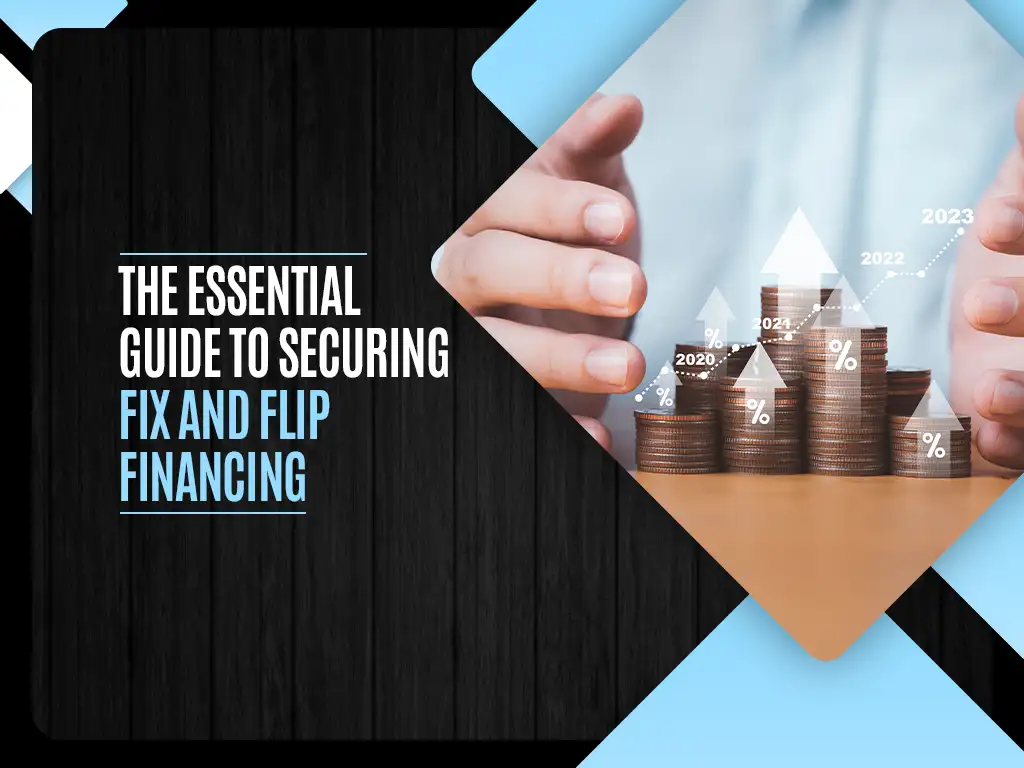The Essential Guide to Securing Fix and Flip Financing
Learn the key steps to secure fix and flip financing for your real estate projects with our comprehensive guide. Maximize your investment returns today!

Fix and flip projects have become increasingly popular in the real estate market as a way to turn a profit quickly. However, securing financing for these projects can be a challenge for many investors. In this guide, we will discuss the essential steps to take in order to optimize returns and secure the financing needed for a successful fix and flip project.
Understanding Fix and Flip Financing
Before diving into the details of securing fix and flip financing, it’s important to understand what this type of financing entails. Fix and flip financing is a short-term loan that is used to purchase a property, make necessary renovations or improvements, and then sell the property at a profit. These loans are typically secured by the property itself, which means that if the borrower fails to repay the loan, the lender can take possession of the property.
The most common types of fix and flip financing include hard money loans, private money loans, and lines of credit. Hard money loans are typically offered by private lenders or investors and are secured by the property being purchased. Private money loans are similar to hard money loans but are typically sourced from individuals rather than institutions. Lines of credit are also available for fix and flip projects but may require a higher credit score and income verification.
Assessing Your Financial Situation
Before seeking fix and flip financing, it’s important to assess your financial situation to determine how much you can afford to borrow and repay. This includes evaluating your credit score, income, assets, and debt-to-income ratio. Lenders will also consider the potential profitability of the fix and flip project, so it’s important to have a solid business plan in place.
In addition to assessing your financial situation, it’s also important to determine how much you will need to borrow in order to purchase the property, make renovations, and cover any other expenses associated with the project. This will help you determine the type and amount of fix and flip financing that will be most suitable for your needs.
Securing Fix and Flip Financing
Once you have assessed your financial situation and determined how much financing you will need, it’s time to start securing fix and flip financing. Here are some essential steps to take in order to optimize returns and secure the financing needed for your project:
- Research Lenders: Start by researching lenders that specialize in fix and flip financing. Look for lenders that have experience working with real estate investors and understand the unique needs of fix and flip projects. Consider both traditional lenders, such as banks and credit unions, as well as private lenders and online lenders.
- Prepare a Business Plan: Before approaching lenders, it’s essential to prepare a detailed business plan for your fix and flip project. This should include information about the property you plan to purchase, the renovations you intend to make, the timeline for completing the project, and the expected profitability of the project. Having a solid business plan in place will help lenders assess the viability of your project and determine whether or not to approve your loan application.
- Gather Documentation: When applying for fix and flip financing, you will need to provide documentation to support your loan application. This may include bank statements, tax returns, pay stubs, and other financial documents. You will also need to provide information about the property you plan to purchase, such as the purchase price, estimated renovation costs, and potential resale value.
- Consider Collateral: Since fix and flip loans are typically secured by the property being purchased, it’s important to have collateral in place to secure the loan. This may include the property itself, as well as any other assets you own. Lenders will consider the value of the collateral when determining whether or not to approve your loan application.
- Compare Loan Options: Once you have gathered documentation and prepared a business plan, it’s time to start comparing fix and flip loan options. Consider factors such as interest rates, loan terms, fees, and repayment options when evaluating different lenders. It’s also important to consider the reputation and experience of the lender, as well as their customer service and responsiveness.
- Negotiate Terms: When securing fix and flip financing, don’t be afraid to negotiate terms with lenders. This may include negotiating the interest rate, loan term, repayment schedule, and any fees associated with the loan. By negotiating terms that are favorable to you, you can optimize returns and increase the profitability of your fix and flip project.
- Close the Deal: Once you have selected a lender and negotiated terms, it’s time to close the deal and secure your fix and flip financing. This may involve signing loan documents, paying any closing costs or fees, and finalizing the terms of the loan. Be sure to review all documents carefully and ask any questions you may have before signing.
- Manage the Project: Once you have secured fix and flip financing, it’s important to effectively manage the project to optimize returns. This includes overseeing renovations, staying on budget and on schedule, and actively marketing the property for resale. By effectively managing the project, you can maximize profitability and ensure the success of your fix and flip project.
Next Steps
Securing fix and flip financing is a crucial step in optimizing returns and ensuring the success of your fix and flip project. By understanding the basics of fix and flip financing, assessing your financial situation, and following the essential steps outlined in this guide, you can secure the financing needed to turn a profit quickly. Remember to research lenders, prepare a business plan, gather documentation, consider collateral, compare loan options, negotiate terms, close the deal, and manage the project effectively. By following these steps, you can secure fix and flip financing and maximize returns on your next real estate investment.



